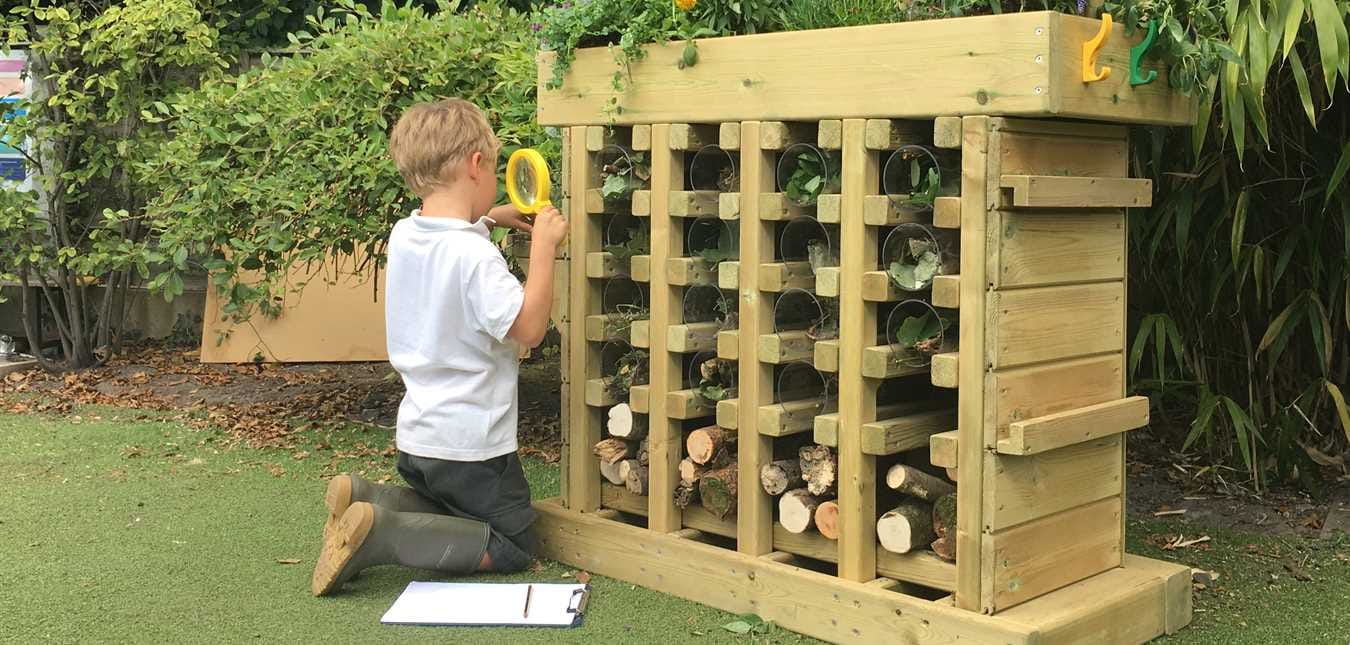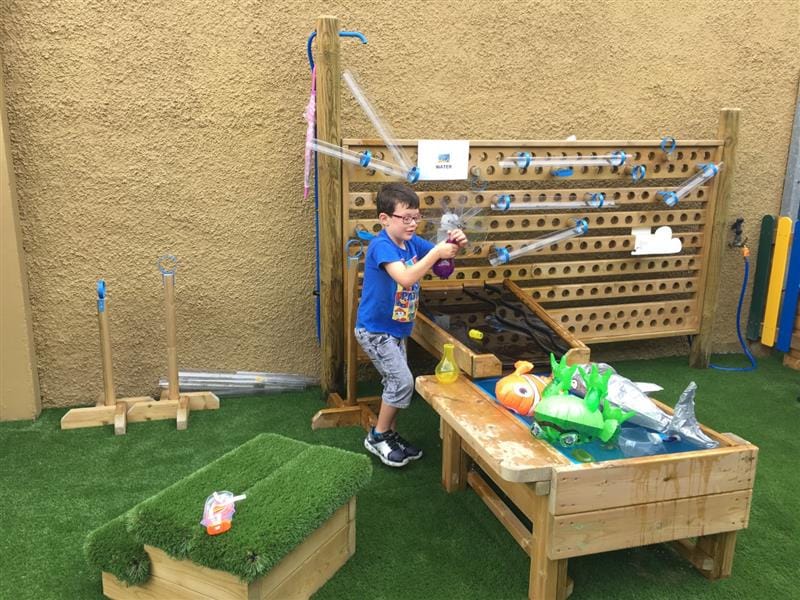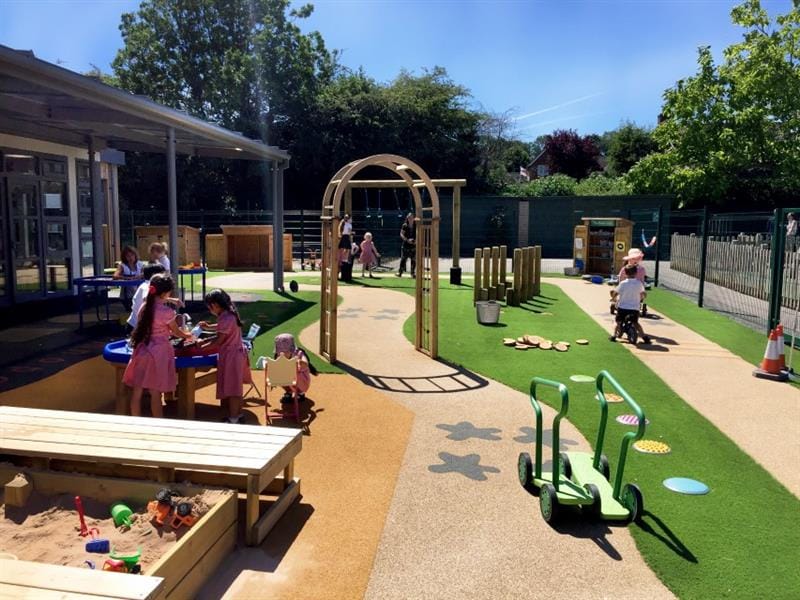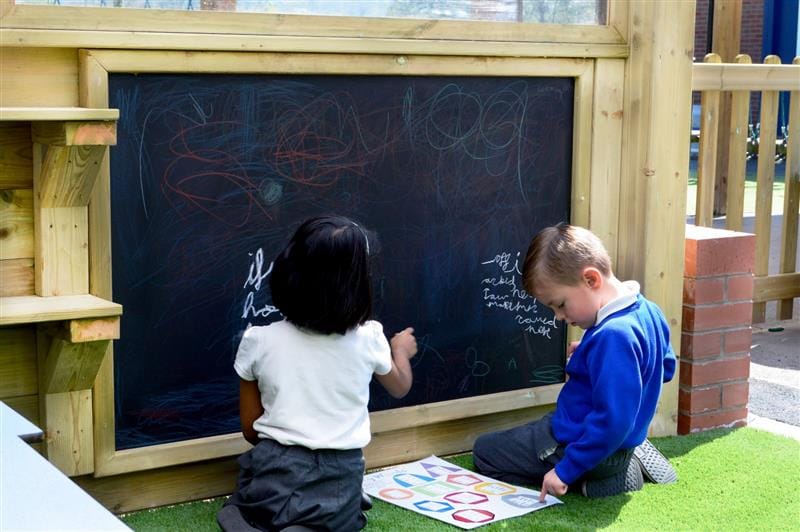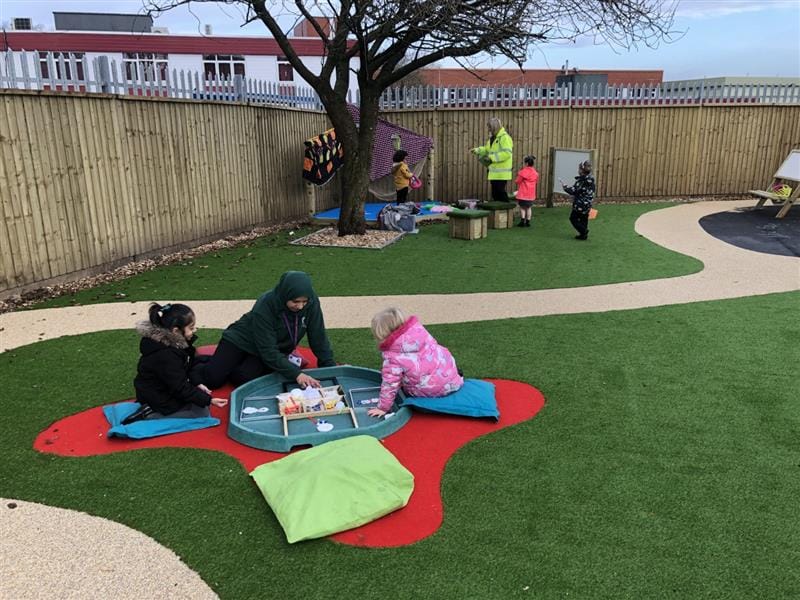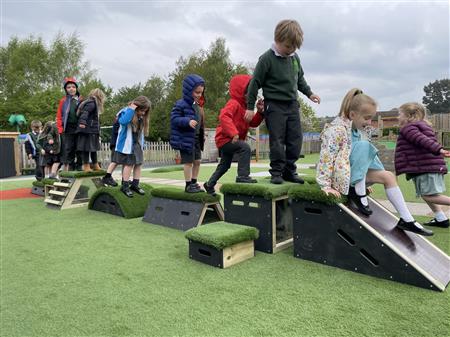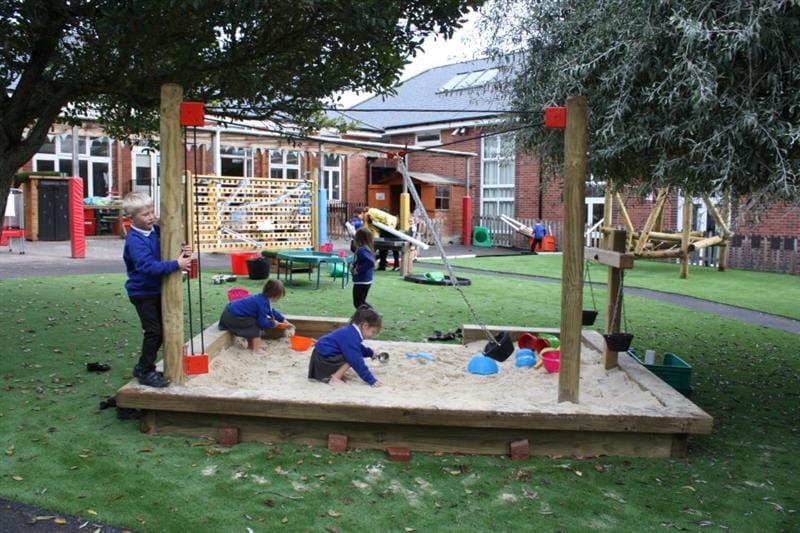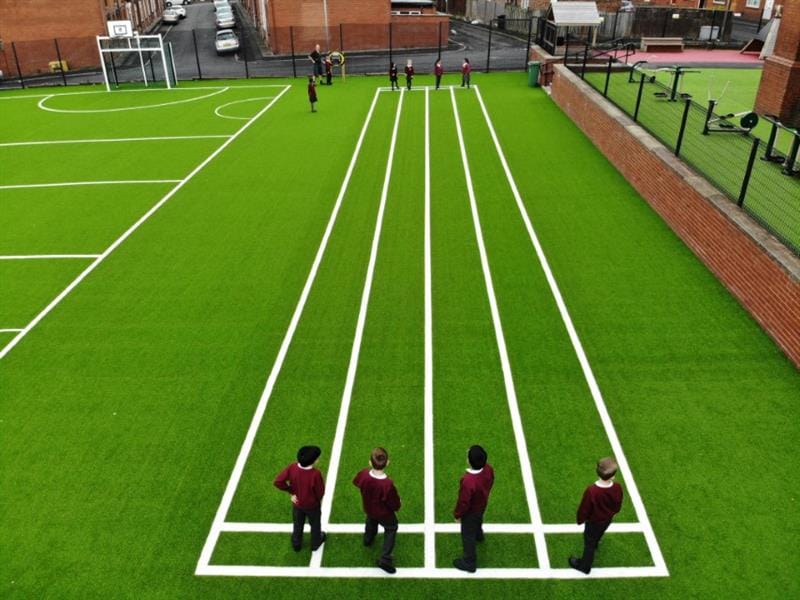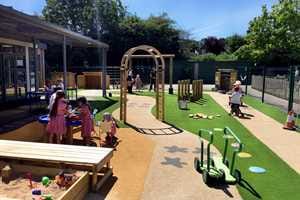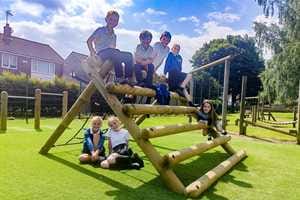
Lesson Ideas and Activities
4 Benefits of Taking Science Lessons Into The Great Outdoors
As a science co-ordinator, I would often joke with my colleagues that my subject was the most important.
However, I feel Science really does deserve its place as a core subject within our National Curriculum.
The teaching of science provides children with enough knowledge and understanding of the world so that they can make informed decisions and they become scientifically literate.
After all, we are nurturing scientists and technologists of the future.
The importance of science in our curriculum
English, maths and science are the building blocks of education, improving our performance in these subjects will be essential if our country is to compete in the global economy.
As educators we need to develop children’s scientific knowledge and allow children to understand the methods of science so that they can answer questions about the world around them.
A main part of the curriculum is to understand the structure and behaviour of the physical and natural world through observation and experiment.
I believe that often the best way to teach science and maintain children’s curiosity is through a practical, hands- on approach.
Scientific enquiry involves children in exploring the world around them and answering questions through observation and evidence.
There are various types of enquiry skills that are nurtured throughout KS1 and 2 and they include:
- Observation
- Observation over time
- Identifying and Classifying
- Pattern Seeking
- Research
- Fair testing
Observation is a key skill used at all stages of enquiry. It raises questions, helps to gather information and find patterns.
I believed in ‘Every lesson a Question’ when teaching primary science and once a question was generated, observation followed.
The benefits of having a green space for outdoor science lessons
Having a garden or a Planter allows children to observe plants growing. Children will enjoy learning about flowers and vegetables if they have been given the opportunity to grow them themselves.
Measurements can be taken as plants grow and they can be dissected and observed through hand lenses so that features can be identified.
Pupils will be able to describe how plants need water, light and a suitable temperature to grow and stay healthy.
Taking your class outside and allowing them to take photographs of trees and plants will help them to identify and name them.

They could make their own swatch book which could be given to another class to use and feedback on.
Pairs of children could be given an egg box and asked to fill the compartments when going on a nature hunt.
This will help when learning how to name deciduous and evergreen trees and plant structures such as leaves, petals, fruit, roots and stem.
Observing changes throughout the seasons from a Forest Floor Learning Den allows children to spend valuable time outside.
Perhaps children could observe one tree in the school grounds throughout the year and make notes and drawings in a nature journal.

Children will start to notice how plants change over time such as the leaves falling off trees and buds opening.
Tables and charts can be made about changes in weather and day length. Further up the school children begin to study the water cycle
They might observe and record evaporation over a period of time such as a puddle in the playground or washing on a line.
The effect of temperature on washing drying or snowman melting can be investigated.
Product Spotlight
Every lesson a question
Having an outdoor space offers many opportunities for children to answer questions by observing over time such as: Which foods do birds like? Where will ice melt the fastest? Does the amount of light make a difference to the number of daisies that grow there?
An outdoor area is needed to look for shadows.
Children will discover how they are formed; they can measure shadows and talk about what might cause shadows to change.
Simple shadow clocks and sundials can be constructed directly on the ground.
Exploring the environment can help children to answer questions about animals.
Having a Bug Hotel shows children how to take care of animals in their habitat and they will notice changes in the habitat throughout the year.
Hands on investigation embeds learning for many children.
By observing animals in nature rather than from a picture, children will become familiar with common animal names and begin to group animals according to their characteristics.
A pond would be a fantastic resource for direct observations.
Life cycles will be observed first hand and children will further understand classification of vertebrates and invertebrates.
Hands-on Exploration
A mud or sand box could be used in so many ways to aid investigative learning in science.
I remember teaching a lesson where I hid a variety of rock samples in a sand box including marble, granite, sandstone, basalt, clay and limestone.
The children became geologists and had to find the rocks using paintbrushes.
They examined the physical appearance of the rocks using hand lenses, microscopes and visualisers.
A useful word bank was created to describe the rocks such as smooth, rough, speckled, grainy, crystals, translucent and crumbly.
Different groups of children then sorted and classified the rocks according to the different properties using Venn and Carroll diagrams and they had to guess how each group had sorted the samples.
Photographs were taken and children wrote their own descriptions when back in the classroom.
The use of an outdoor space turned what could have been quite a dull lesson learning about different kinds of rocks into an afternoon of discovery which sparked enthusiasm.
I was presented with a variety of different rocks which children had found both at school and at home for many weeks!
A trim trail provides opportunities for cross-curricular learning.
When studying the circulatory system pupils can observe the effect of exercise on their bodies.
The children can take their resting pulse rate before exercise and once they have completed the trail, they could test their pulse every two minutes until it returns to its ‘normal’ level.
It would be possible to graph a pattern of how quickly pulse rates return to normal after different exercise.
Children could design their own trim trail course around the school grounds that alternates vigorous with less energetic exercise and resting stations. To do this, children can utilise the incredible Play Builder sets and help them unleash their imaginations!
Combine this with bean bags, skipping ropes and the use of Pentagon’s Get Set, Go! Blocks to create a truly unforgettable lesson.
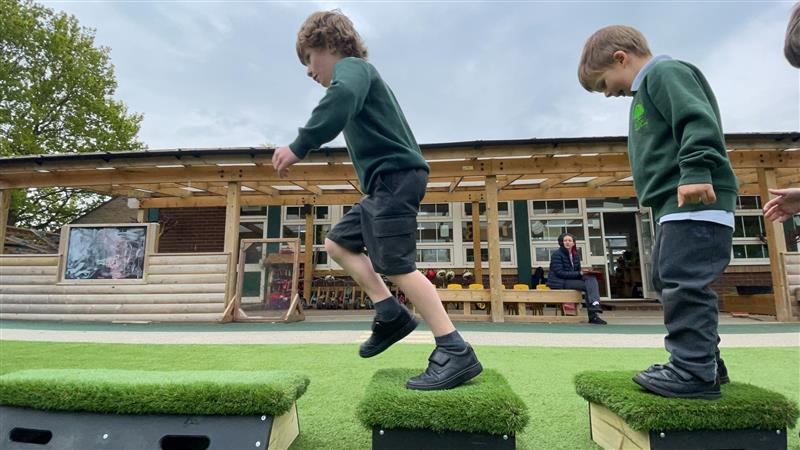
Classes could make simple maps to show the route and explain each task.
Exercises could be ranked by their level of difficulty using scientific evidence children have collected from tests.
Teachers could specify criteria such as the trail must include a minimum of 5 different exercises along with various resting stations.
The map must be able to be carried by the participants during the trail and not blow away whilst they are exercising.
Perhaps children could promote the trail to another class in the school and include some writing about how they decided which activities to include in the trail.
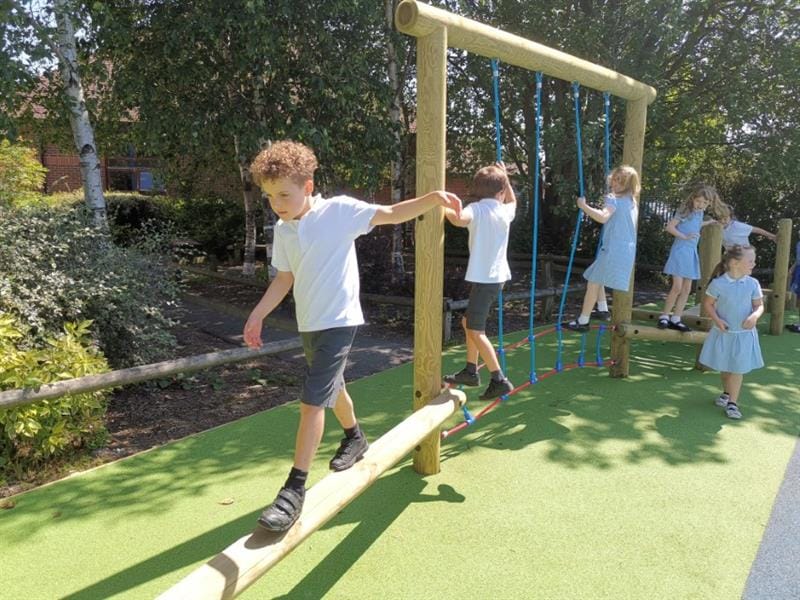
Get active in your science lessons!
One of my favourite topics to teach was ‘Forces’ which just lends itself to being taught outside taking part in practical investigation.
Children could explore the effects of air resistance by making the best parachute and changing one variable such as the material, length of the strings or size of the canopy.
A Climbing Frame would be a great place for a free fall test!

Friction can be explored by testing shoe soles on different surfaces in the outside area using a force meter.
The children could devise a sales pitch for a shoe of their choice and explain why it is suitable for purpose.
Having a Rope and Pulley Mover installed in the playground is a fantastic resource for answering scientific questions such as: What are pulleys and why are they useful? How can we make a small force have a big effect? Can more than one force be acting?
Embrace the mess and noise!
Quite often I would take my science lesson outdoors if I knew it was going to be messy!
It is so much easier than covering your classroom in tablecloths and paper and worrying about any spillages.
When studying dissolving and irreversible reactions we made our own exploding rockets using vitamin c tablets and water in film cannisters.
The children loved this and were able to devise their own fair tests. Having an outdoor space made the clear up so easy.
Sometimes you don’t want to disturb other classes throughout the school if you know your lesson is going to be a particularly lively one!
Having a sheltered classroom gives you another space to embrace the noise! I utilised our outdoor space when studying sound.

We played games to explore sound where we all sat in a circle with one child in the middle with their eyes closed, they had to guess which child from the circle made a noise/said a word.
We tried this when covering one of our ears and wearing a hat/hood.
Children made straw whistles and tested them outside, they observed how the pitch changed as they shortened the straw.
Having a variety of instruments to explore outside would be extremely beneficial when teaching sound.
Opportunities for describing sounds would occur in every day play and the children could explore what happens to a sound as they get further away from the source.

At times you can feel restricted when teaching science in the classroom. Having an outdoor space allows more freedom when planning lessons.
A memorable lesson of mine was when we made balloon rockets and attached different materials string, wire, ribbon across the length of our sports pitch.
The excitement was palpable as the children let the rockets go and they were able to directly observe the effects of friction.
I liked to get my classes moving in my lessons and one of the ways I did this was with a ‘running dictation’ type of activity.
I would put a diagram for example a flowering plant in an area outside and split the class into teams.
Their challenge was to re-create the diagram by allowing one person at a time to run up to it and feedback to the rest of the group.
Taking children outdoors when teaching primary science helps to nurture their curiosity and develops the skills children need in order to answer questions.
Science is a wonderful and exciting subject and can be the best part of the week for some children.
Making use of an outdoor space and equipment allows children to investigate problems and discover why science matters so much in our ever-changing world.
